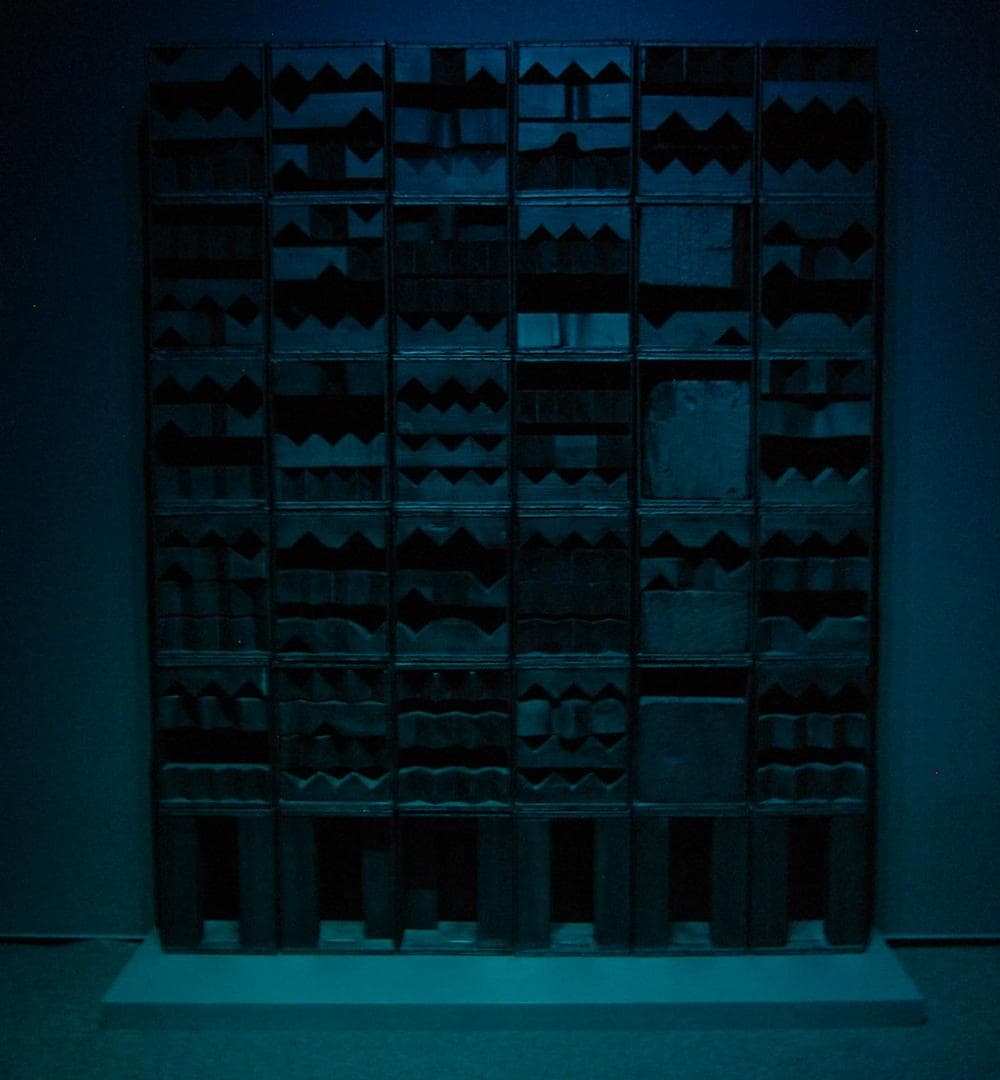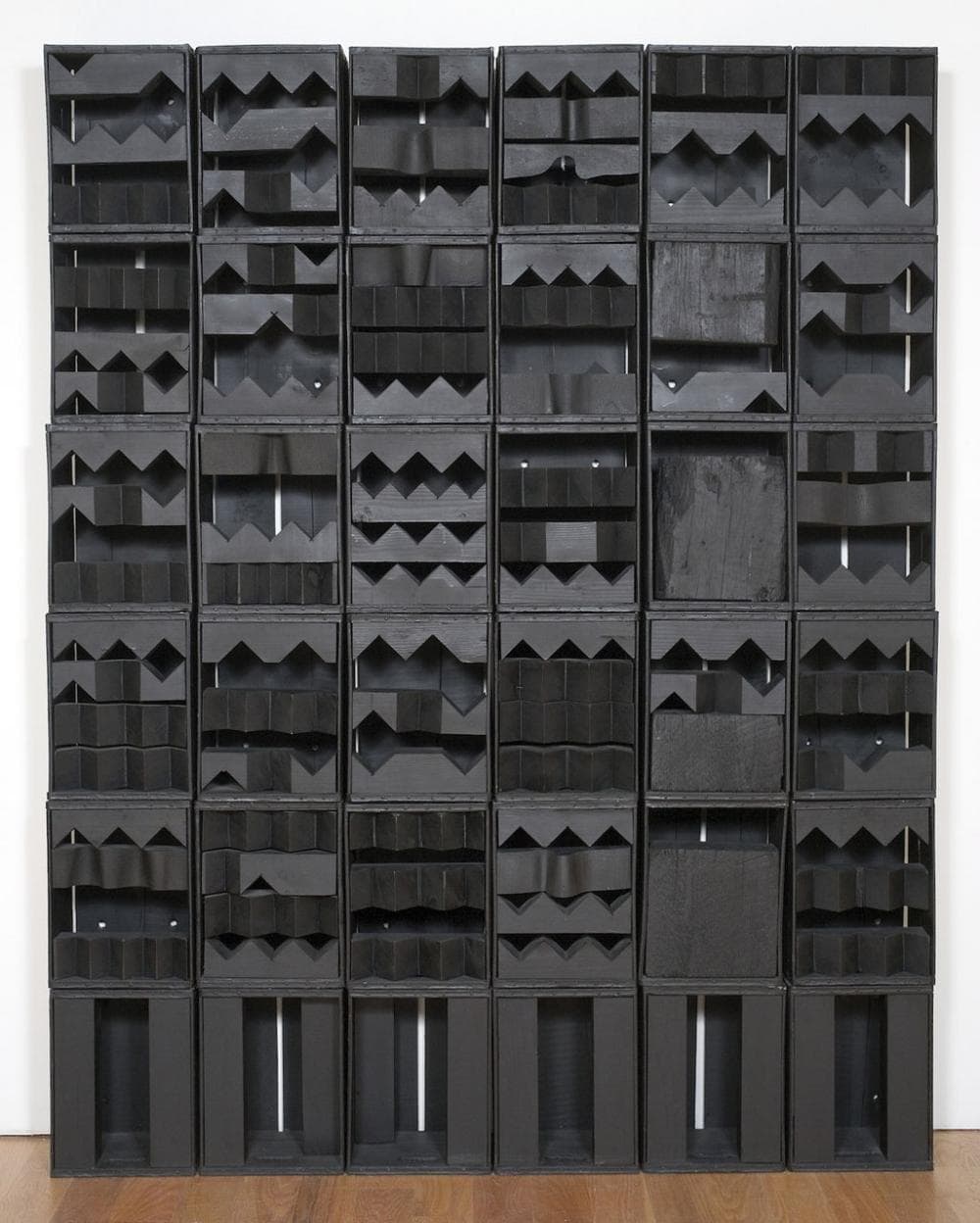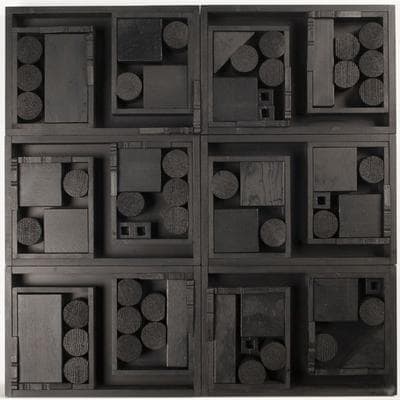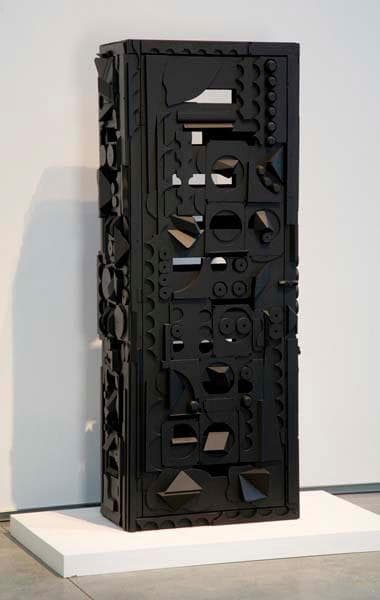Advertisement
Poet Of Darkness: Recreating Louise Nevelson’s '50s Midnight Exhibits
In the late 1950s, the sculptor Louise Nevelson (1899-1988) hit her peak with a series of exhibitions at New York’s Grand Central Moderns gallery.
They showcased her signature surreal assemblages of wood—chair legs, balusters, jagged planks, and broken things—arranged in boxes and crates stacked up like alien altars and all painted black. The black unified the various parts and radiated sensations of midnight and mystery and death and otherworldliness.
For her 1958 exhibit “Moon Garden + One,” she amplified the experience by displaying her assemblages under dim blue lights and against dark-painted gallery walls. It was a pioneering example of what would come to be called installation art.
These days Nevelson’s sculptures are usually displayed in the brightly lit white galleries typical of contemporary museums. But the exhibit “Louise Nevelson: Black” at Wellesley College’s Davis Museum (106 Central St., Wellesley, through June 9) aims to recapture something of that 1958 experience by showcasing three wood sculptures and five prints (mainly etchings of abstracted women)—all the Nevelson works that the museum owns—under blue lights and against black walls.
According to the Davis, Nevelson’s long-time dealer Arne Glimcher of New York’s Pace Gallery recalled that she “used to install all of her works in very dark spaces. For her first shows of environments in the fifties…she painted the entire place black and she had almost no light in there. So your perception had to become hyper-active because of the light-deprivation.”
It could also be disorienting. Davis Director Lisa Fischman says Glimcher also recalls “people bumping into things.”

The spark for this show was Davis exhibitions manager Andrew Daubar’s recollection of these tales.
“It’s really a trip to go in there. You have this bizarre physical and optical experience of the work,” says Fischman, who organized the exhibit. “The more time I spend with those objects … I think I really am responding to the relationship of the human body in relation to sculptural form.”
Emerging out of the darkness are Nevelson’s 1971 assemblage “Luminous Zag,” an 8-foot-tall grid of 36 boxes filled with alternating patterns of blocks of wood cut with saw-tooth edges, and her 1972 sculpture “Dream House V,” a 6-foot-tall alien coffin standing on end. Hanging on one wall is her small 1965 piece “Diminishing Reflection XXVII,” an arrangement of square, circle and triangle blocks in boxes.
The dark atmosphere creates a powerful mood, but these are later Nevelson sculptures, after she adopted a more regular geometry in her work around 1960, perhaps in an effort to incorporate aspects of Minimalist art. The shapes and repetition feel more generic. The goth vibe feels less like Nevelson channeling all darkness and more like shtick. Which drains away the alluring mystery.
Still, the blue light and black walls bring out aspects of Nevelson’s sculpture that get washed out by bright light.
“The hand-hewn quality, the found quality, the assemblage quality of the work contrasts with the regularity of the boxes,” Fischman says, “and something starts to happen in that light that brings out things that are strange and surreal and fantastical.”



This article was originally published on March 19, 2013.
This program aired on March 19, 2013. The audio for this program is not available.
